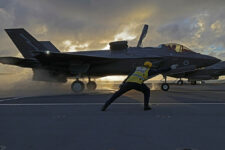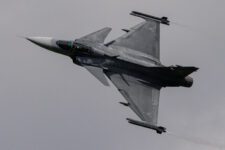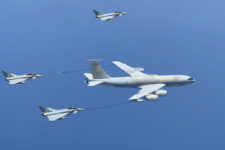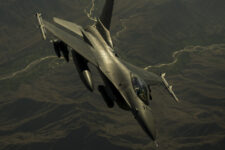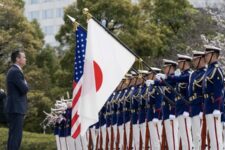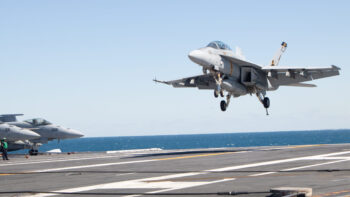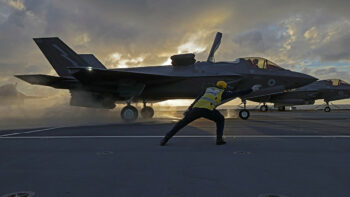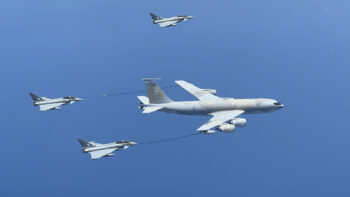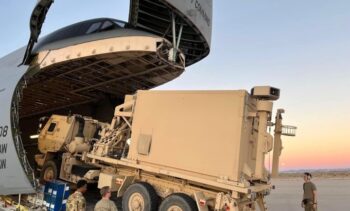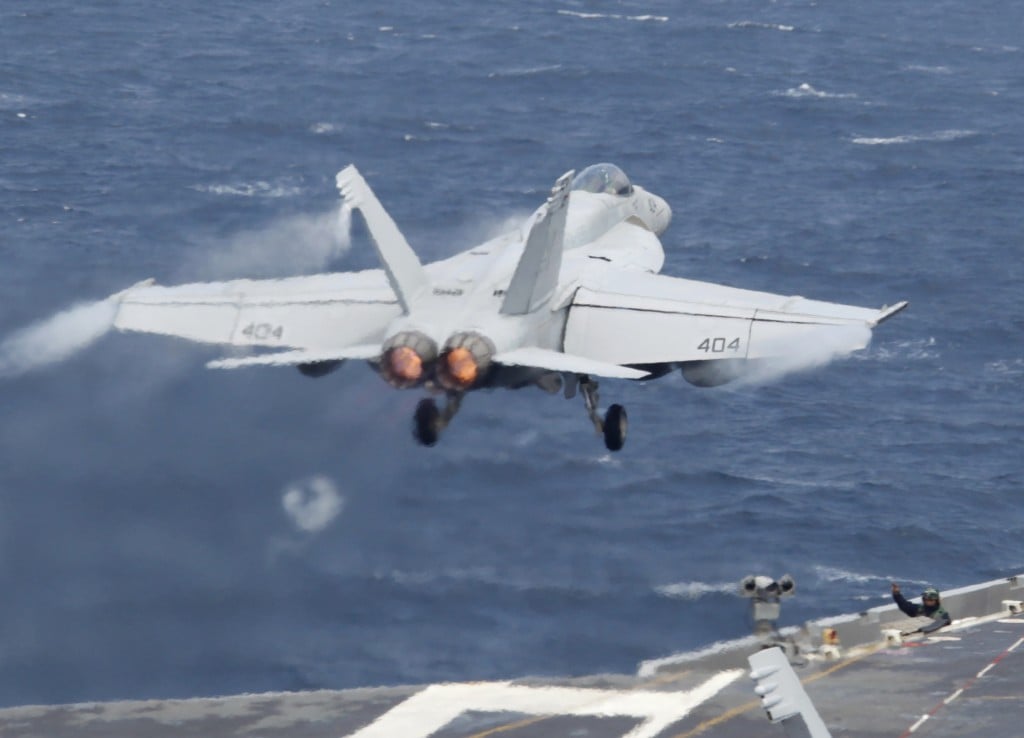
Navy F/A-18 Super Hornet
SURFACE NAVY ASSOCIATION: Navy Secretary Ray Mabus wants the arms export bureaucracy to get a move on and approve Boeing‘s “crucial” sale of Super Hornet fighters to Kuwait.
The Kuwait deal is for 28 fighters, with an option for 12 more. That’s not a huge sale, but in and of itself, it’s enough to keep the Boeing production line active for 14 to 20 months.
“It’s a frustrating process for all parties involved and it speaks to the need to do something about the whole [export control] process,” Mabus told reporters after his remarks to the Surface Navy Association conference. “I don’t think that there’s been any particular slowdown with this program. [There’s] just the long torturous process you’ve got to go through to do any of this, to do any international sale, whether to an ally or not.”
Reform is much needed, Mabus said, but it’s not happening: “I think you see efforts from time to time, just none has been particularly successful so far.”

Sec. Ray Mabus at the Surface Navy Association conference
Mabus doesn’t control the process — the Office of the Secretary of Defense, the Departments of Commerce or State, and the White House all must approve arms exports. But the US Navy has a double stake in Boeing’s success.
First, the sale would provide a strategically located ally with equipment compatible with the US. Second, it would ensure the F-18 production line in Saint Louis stays open for another few years. (The line also builds the EA-18G Growler electronic warfare aircraft).
Once upon a time, the Navy was willing to let the line go cold as it stopped buying Boeing’s F/A-18E/F Super Hornet and started buying Lockheed’s stealthy F-35C Joint Strike Fighter. But lingering anxieties over how well stealth will hold up against advanced adversaries, repeated delays to the F-35 program, coupled with maintenance problems with older-model F-18s, have revived naval and congressional interest in buying more Super Hornets to fill the “fighter gap.”
Boeing has long said it needs to build 24 fighters (the Kuwaitis ordered 28-plus) a year — two a month — to keep the production line economically viable. “Conceivably they could throttle back to 20, [but] it’s really a question of costs,” said aerospace analyst Richard Aboulafia. As the number of planes per year drops, the amount of overhead each plane has to carry rises rapidly, making the Hornet more expensive — even uncompetitive.
As an older design, “competitiveness of the Super Hornet heavily depends upon price,” Aboulafia told me. So the importance of the Kuwait deal, he said, “it’s not just that it guarantees a couple of years, it guarantees a couple of years at a competitive price [to] keep in the game with Canada” — which is looking for an alternative to the F-35 — “and with the Navy” — which is currently buying Super Hornets “hand to mouth” based on what the service and Congress can wrangle into each year’s budget.
“There are a few international orders for F-15 and F/A-18 that are key for future production [in Saint Louis],” Boeing spokeswoman Caroline Hutcheson told me. “Particularly for F/A-18, a near-term international order is the bridge to our ability to deliver future US Navy aircraft.”
“For F/A-18 we are working to finalize a (near term) sale with a Middle Eastern customer. I can’t name the country specifically,” said Hutcheson, pointedly not naming Kuwait. “Super Hornet is also involved in a competition in Denmark, and we’re in discussions with Belgium and Finland. Canada has also indicated it will reopen a competition and consider F/A-18.”
“The near-term Middle Eastern country would bridge to these potential international orders (as well as future US Navy domestic) jets, which is why that one is really key to future production,” she told me.
From support to ‘warfighting’: Space Force releases first ‘capstone’ operations doctrine
“Space is a warfighting domain, not a collection of supporting activities. In conflict, space will be a contested environment. We are the military Service dedicated to fighting in it,” Space Force chief Gen. Chance Saltzman writes in a forward to the new Space Force Doctrine Document 1.
Kuwait and Boeing made their agreement last summer, but US government approval isn’t yet in sight. Meanwhile, Kuwait is looking hard at the Eurofighter Typhoon.
“It’s a little concerning,” Aboulafia said. Given that the F-15 Eagle fighter’s fate depends on a future Israeli sale, the Boeing C-17 line is already shutting down, and the Hornet’s future is uncertain, the company’s once-profitable combat aircraft unit — the old McDonnell Douglas — could be gone by 2019.
“I understand the production schedules very well and I also understand our need to bridge to the F-35 with the F-18s,” Mabus said. “The international sales [are] crucial to a lot of things, not just the production schedule. [such as] the fact that we’re going to flying the same kind of aircraft, that we’re going to be training together” with the Kuwaitis if they do acquire the planes.
Mabus is hardly the only senior official to bewail the export control bureaucracy. In November, shortly before departing the Pentagon, then-Air Force acquisition executive Bill LaPlante said reform was “urgent.” If the US doesn’t sell weapons to its friends and allies, less sluggish and less scrupulous players will fill the gap. “Guess who’s over there selling stuff?” LaPlante asked rhetorically. “I don’t know, China?”

